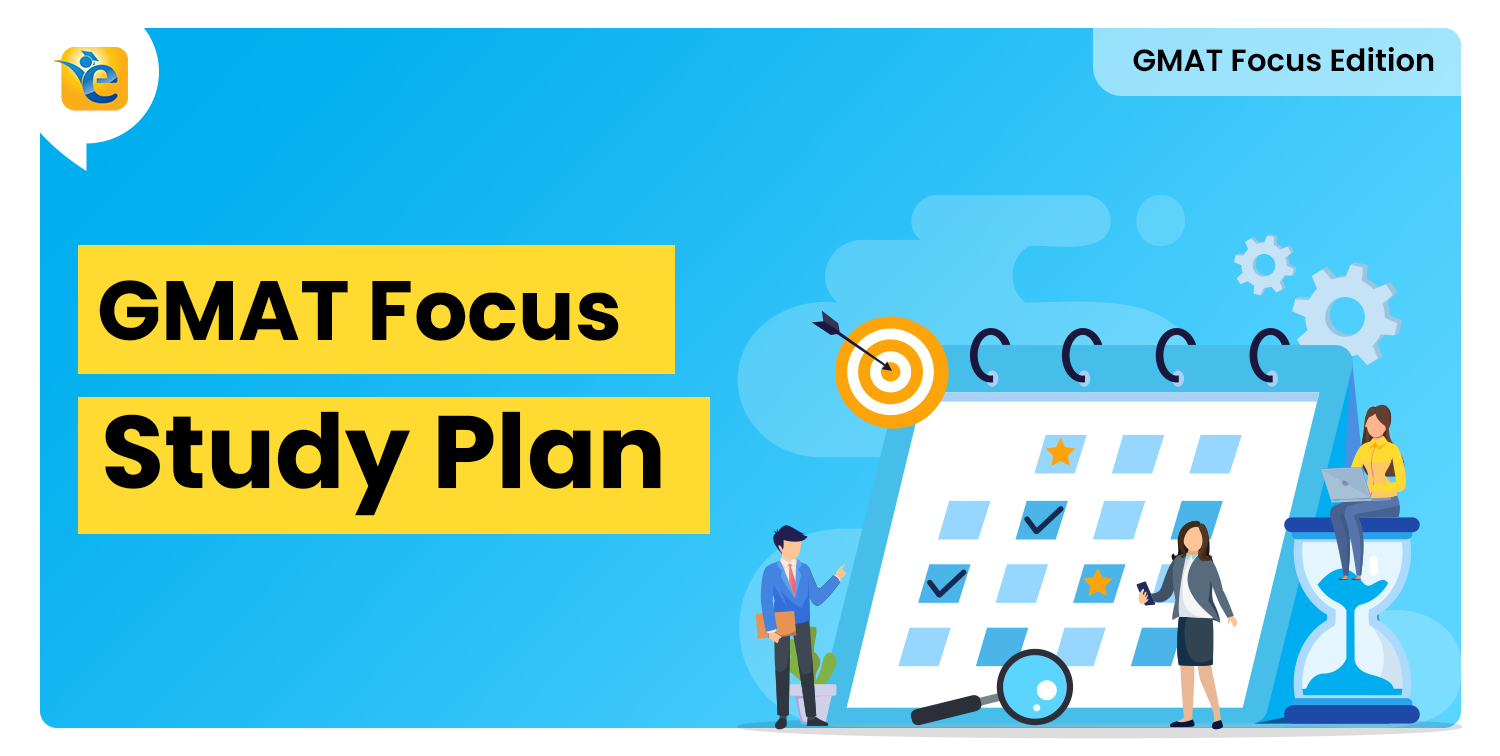1. Introduction
If you have always been weak at math, then we understand how you feel about the GMAT Quant syllabus and questions. You were probably happy (and relieved!) to finally be done with all things mathematics when school ended. But now, the demon is back!
But do not worry – GMAT quant questions are unlike your regular math questions, which are seemingly unfathomable and calculation-intensive. The GMAT quant tests your logical ability. And needless to say, we’ve got you covered there. In this article, we will show you how to ace GMAT Quant, just as Richa did!
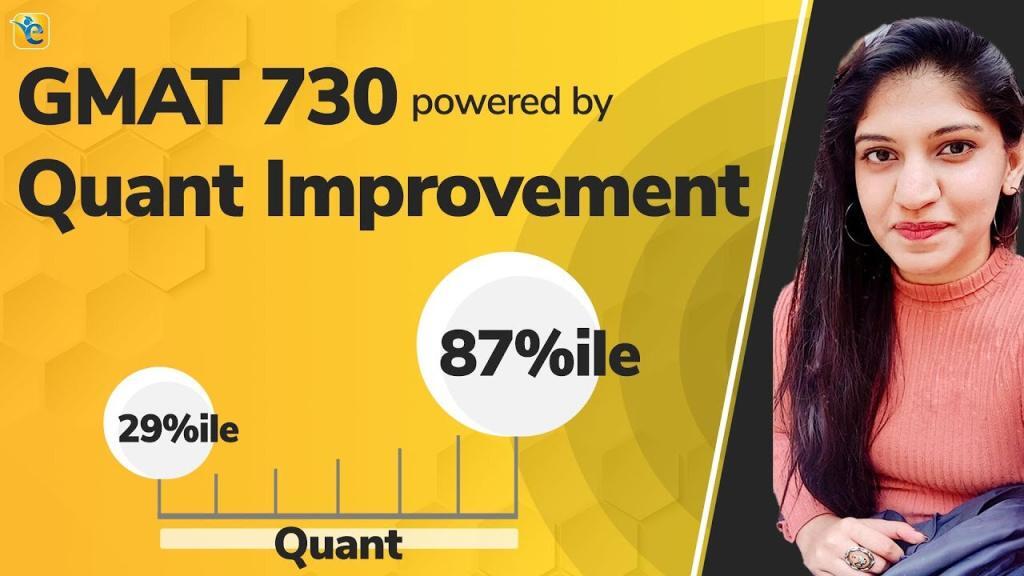
On the other hand, if you are good with GMAT Quant but are struggling to break out of that Q48 plateau, this article is for you as well. We’ll help you overcome that plateau and explain how to score 51 in GMAT Quant.
For those of you who are wondering why you even need specific strategies to prepare for GMAT Quant and why you can’t prepare for it like any other math test, we will explain how the GMAT is a very different test, given skills that it evaluates, and accordingly, why it needs a very different style of preparation.
In this article, we will give you a predictable path to success. As long as you diligently walk on that path, you should be able to achieve success on GMAT Quant.
Let us start with a quick questionnaire about what you need to ace the GMAT quant:
- Do you have to be a Math whiz to feel confident about GMAT Quant? No!
- Is it doable for students of all starting abilities? Yes!
- What do you need to ensure success? Diligence.

Now, we’ll start from the very basics. Before we give you your blueprint for success, we’ll first understand what GMAT Quant is all about – what it tests and how.
But even before that, you should be confident about the power of the strategies that you are going to learn here.
2. Why should you trust our GMAT quant strategy?
The biggest reason for you to trust these strategies is that they have already powered the success of all kinds of students, regardless of where they started. For example, Rida, who had a great fear of math since school, improved from a Q33 to a Q49 with our GMAT quant conceptual guide and notes. On the other hand, Richa, who already had some foundation in quant due to her background and education, went from a Q38 to a Q50. Both these students got their dream scores despite starting from very different abilities, 15th, and 35th percentile, respectively. In fact, Rida liked the product so much that she interviewed with us soon after her test. Now, she works with us!
Rida and Richa were students of our latest Quant course- Quant 2.0, which has accounted for the largest number of Q49+ scores reported on GMAT Club.

3. How to begin your Quant Prep?
3.1 FIND YOUR STARTING ABILITIES
A good journey, especially one whose results are critical, should not be embarked upon blindly. Good planning is a prerequisite to any successful journey.
Now, on what basis do you build your plan? Well, at a high level, it should be based on where you are and where you want to reach. In our GMAT context, this means that your study plan should be based on your starting abilities and your target score. Now, finding your starting abilities does not only mean getting an overall Quant score; it also means getting your scores at the sub-sectional level. Let us explain. GMAT Quant is divided into two subsections – Arithmetic and Algebra/Geometry. These two subsections are independently scored on the GMAT. That means you get two scores on the exam, one on each subsection. These scores are translated into an overall score. So, understanding where you are on each subsection at the beginning is essential. Naturally, you will need to put in more effort to prepare for your weaker subsection.
Earlier, these starting abilities were never easy to describe accurately. But now, we have GMAT Quant Sigma X mock test.
A Sigma X-mock is the only mock that can give you your abilities at the sub-sectional level. The only other way you can get this kind of score is if you go and take the actual exam (the offline one, not the online version! and also buy the ESR. This second option will cost you around $300, while the first one is free and equally correct. But wait, this is not the end. A free Quant mock test also gives insights into your time management on the exam- how you perform on questions of varying difficulty as time moves on.
Take a free Sigma-X mock test to get your sub-sectional abities in both GMAT Verbal and Quant:


3.2 CREATE YOUR GMAT QUANT STUDY PLAN
Once you get your starting abilities from your Sigma X-mock or the actual GMAT, the next step is to plan your unique journey. If you’ve already taken the exam once and now plan to retake it, you must already have your scores, but if the score is more than 2 months old, we encourage you to take a GMAT quant Sigma X-mock diagnostic test to get your true abilities as of now. We recommend doing so because our abilities tend to change with time – now, more than two months after the GMAT exam, you would likely be at a lower ability (due to lack of practice, typically!).
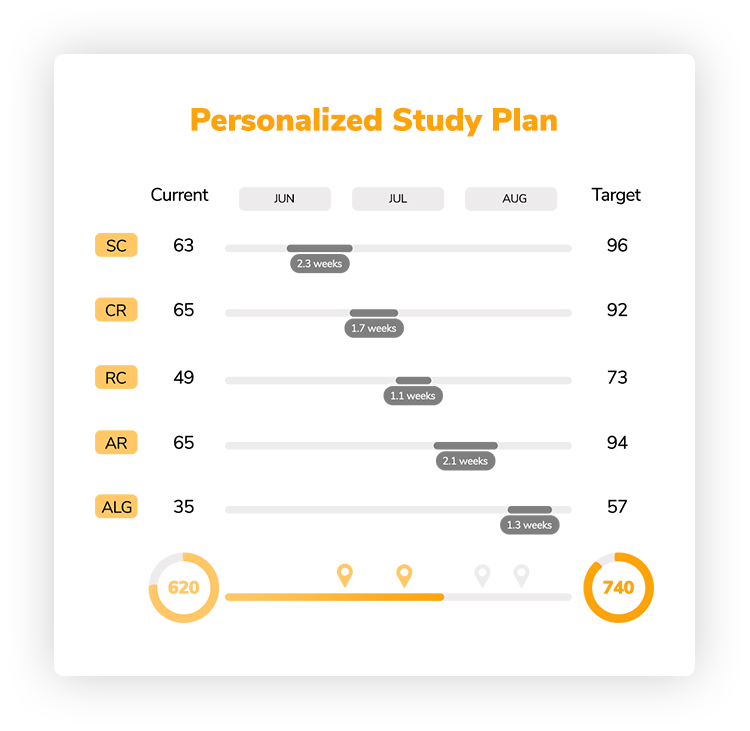
Read our article “GMAT Study Plan – Benefits” to know about the other benefits of creating a personalized study plan.
4. Steps in your Quant Prep Journey
We’re going to break the entire process of preparation down into three major steps:

- Master one topic at a time
- Cement
- Refine to Perfection (Test Readiness)
4.1 Master each topic one at a time
You already know that GMAT Quant is divided into two subsections- Arithmetic and Algebra/Geometry. Now, these two subsections can, in turn, be segregated into five major topics- Number Properties (NP), Word Problems (WP), Advanced Topics (AT), Algebra (ALG), and Geometry (GEO).
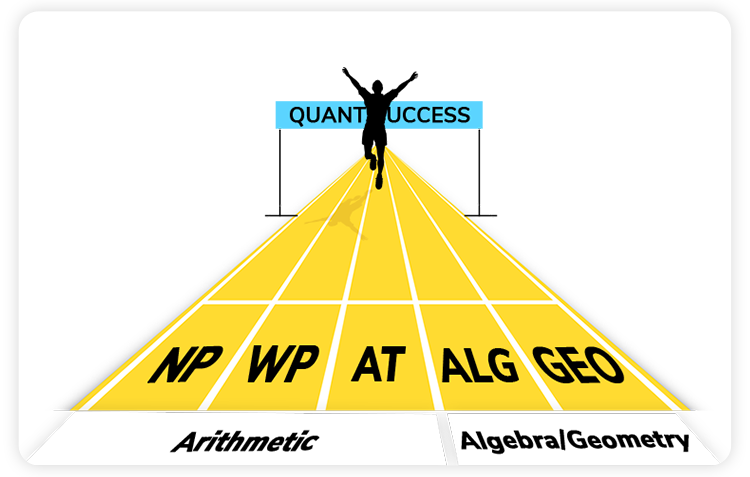
Now, although you read “each topic” in the heading of this section, let me clarify upfront that you may choose to skip a few topics and only do the topics you really need to do – based on the weaknesses you identify in your starting abilities. So, while some students may need to do all 5 topics, some may need only 3, and some none. For example, you can skip this step altogether if you are already at a Q48 or higher because, in that case, you likely already know the topics but just need extra polishing.
In this step, you need to focus on building abilities. Timing is not a priority yet. Now, there are two main components of building ability:
1. Building concepts
2. Building skills pertaining to how to apply those concepts

Students often know concepts but need help with applying those concepts to questions. If you’re one of them, don’t worry! All you need to understand is how to go from Concepts to Applications. You need Process Skills here. These process skills are what form the bridge between concept and application. Right now, you’re just hanging on that bridge; the only sure way to successfully cross it and reach the other side is to attain mastery of all 7 Process skills. Here are GMAT Quant skills tips; Translate, Infer, All Cases, Constraints, Visualize, Simplify, and Manipulate.
Watch this video to know more about the process skills required to ace GMAT Quant:
Now, an important note before we wind this section up: You cannot say you’ve mastered applying the process if you rely on shortcuts since they are not scalable methods. They work here and not there – in essence, shortcuts are untrustworthy. Methodical approaches based on concepts intertwined with process skills, once internalized, stay with you, and make you capable of solving any and every question in GMAT Quant.

4.2 Cement
If you do the previous step well for any topic, that is, if you truly master that topic, you can confidently say that you’ve aced the first stage of learning and have already gone from average to good on that topic.
But before you move on to the next topic, you need to level up! You need to go from good to very good. That is when you will truly become ready to move to the next topic in your study plan. At e-GMAT, this second stage of preparation is called Cementing – here, you “cement” all the foundations you laid in Stage 1.
The idea of cementing is to become exam-ready, one topic at a time. If this one topic was all the exam tested, then you should be able to ace that section of GMAT Quant. If you do this stage well, you are on the path to Quant success; if you do not pass this stage, you get clear proof that you need to course-correct to be successful on your exam. You must be wondering what it means to pass cementing. Let us give you clear metrics that translate to cementing success:
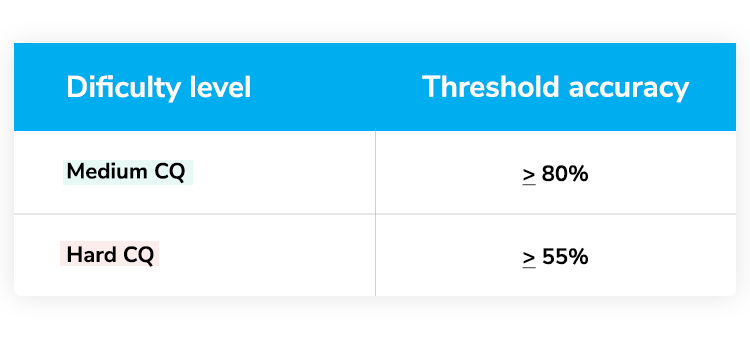
- On medium-cementing quizzes, score 80% or higher.
- On hard cementing quizzes, score 55% or higher.
We encourage you to watch this video outlining e-GMAT’s cementing architecture and the value this stage adds to making success predictable:
4.3 Refine through data (Test Readiness)
Till the cementing stage, you only dealt with one topic at a time. But as we know very well, the exam will not have only one topic. It will have everything and that too, not in order. You need to switch from one topic to another without losing focus or efficiency.
How do you do that now? The best strategy is to practice solving questions in two topics at a time, say Number Properties and Word Problems, and gradually build the ability to solve all 5 topics at once by taking a Quant-only mock.
In the true sense of the term, this stage will make you test-ready. Of course, you will combine topics only after you are sure that you have no gaps left after Cementing. If you have some gaps, then you first address those by leveraging data. Scholaranium gives you powerful data that can help you accurately identify any and every weakness you might have. Once you find these, you can go back to the course, redo the relevant application files, and then come back to Scholaranium for targeted practice that will help you iron out all the creases.
And there you are – Ready for the test!

5. Customize your Journey
Alright, now you know all the steps to GMAT Quant preparation, from the beginning till the end. But you must realize that not all of you will have the same journey to success. You may have the same destination, your target GMAT quant score, but because of differing starting abilities, you should take different paths to your destination. We’ll try to summarize these paths at a high level in this section. However, you can get a much deeper level of personalization with PACE (Personalized Adaptive Course Engine), one of the key highlights of our Quant 2.0 course. The PACE architecture enables you to go much deeper, defining, at a granular level, the concepts you must go through in each topic and telling you what you can skip.
Here are some different high-level paths:
- Low Starting ability
- < 50th percentile ability in both subsections – Arithmetic and Algebra/Geometry.
- Do all three steps for all topics.
- Suggested sequence: NP, WP, AT, Alg, Geo
- Mid Starting ability
- Between the 51st and 75th percentile ability in both subsections.
- For your weak topics, learn the relevant concepts in step 1 and then continue with steps 2 and 3.
- High Starting ability
- Above the 75th percentile ability in both subsections.
- You most likely have no or minimal concept gaps. You could still have process gaps (application gaps).
- Do step 3 directly – Leverage data from your solving of the questions to identify weak spots, if any.
- Based on this analysis, study concepts as needed and also practice application (for e-GMATers, concept, and application files).
- Then, do targeted practice in these weak areas through custom quizzes attacking these areas.
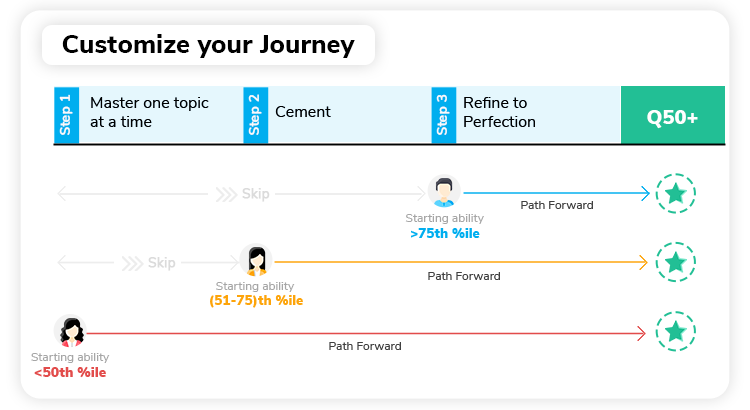
6. Next Steps
We’re almost at the end of the article (We had great fun writing it and hope you enjoyed reading it!) Before we say bye, let’s give you all you that you need to start. Here’s your list of next steps:
- If you don’t know your starting abilities, take a mock and find out.
- Start planning if you have the right starting abilities (through a Sigma X-mock or the real GMAT).
- If you’re all done with the above two steps, then just start preparing!


